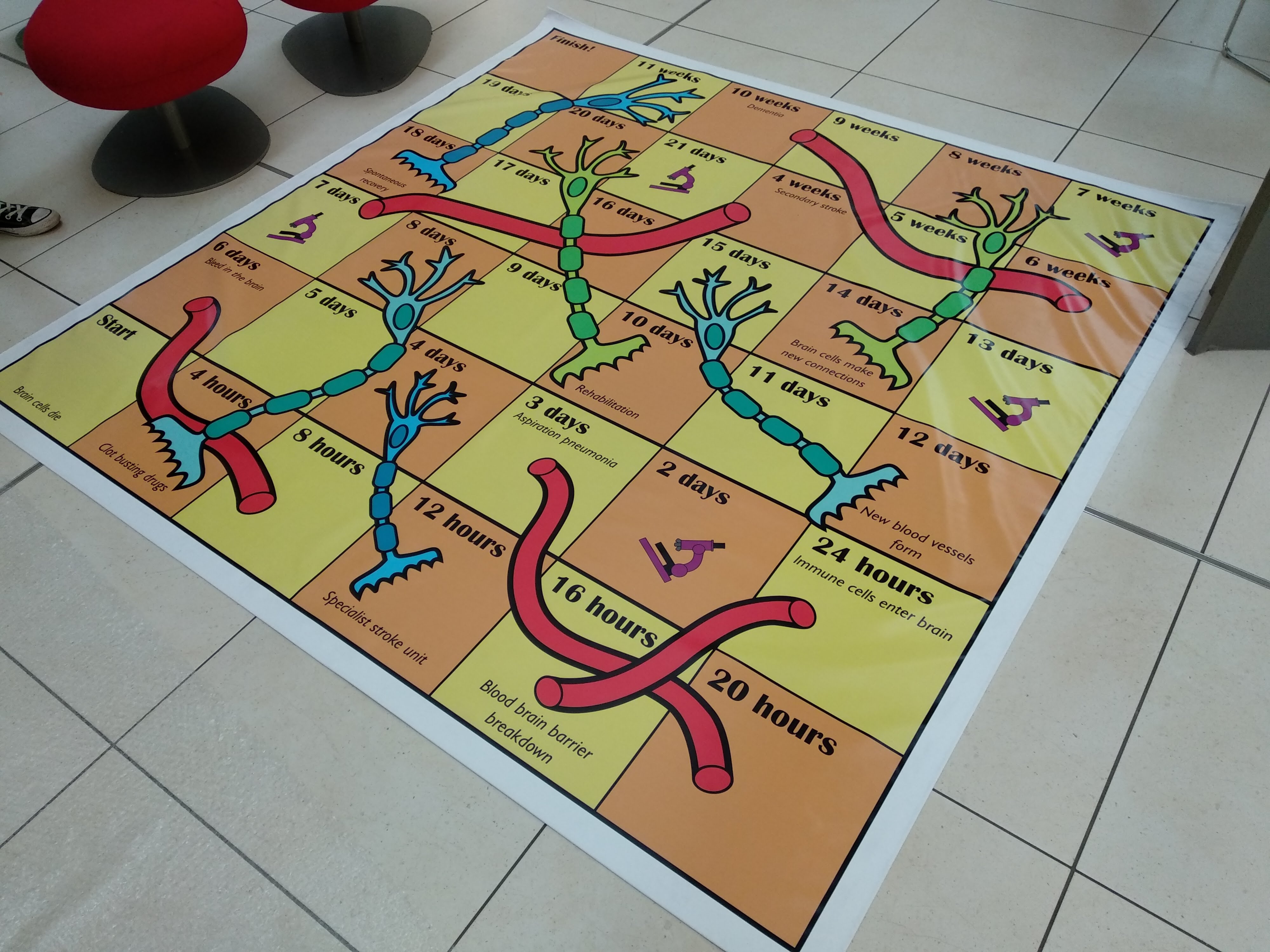Just before Christmas, I was fortunate to be awarded an Institutional Strategic Support Fund (ISSF) public engagement grant from the Wellcome Trust to develop some new activities to help explain my lab’s stroke research. Over the past couple of months, I’ve been working really hard to get everything ready for our first event in June. Balancing it around thesis writing, the final big study of my PhD and cubs planning has been hectic I have to say. I’m really excited to share a preview of our new activities. This first is giant snakes and ladders board game called Blood Vessels and Brain Cells to help use explain what happens after a stroke. It was just printed last week and it looks amazing! Thank you to everyone who I pestered for feedback. It’s really helped me improve the design.

We also have a slime making activity that help explain that ischaemic stroke happens when a clot blocks a blood vessel that supplies the brain. At “great personal sacrifice”, my other half helped me experiment with different recipes. The idea it that participants will draw on of the cards and depending on what risk factor for stroke is on it, they will add different coloured beads to the slime. We have yellow beads for obesity, black polystyrene balls for smoking, grey beads for ageing and red heart sequins for heart disease. We ran both of these activities at my cub pack earlier this week and they went down really well. Possibly not as well with the parents when they saw their kids were bringing slime home with them. Special thank you to Claire for all her help with developing the activities and coming along to cubs with me.

Our final activity is a giant Kerplunk-style game which we’ll use to explain that clots can cause ischaemic stroke and thrombolysis, clot busting drugs, can break these down and restore blood flow to the brain. Unfortunately, there was a delay in the delivery of one of the components so we weren’t able to run it at cubs. Me, my other half and one of our friends did play it in the garden and had a great time.

I’m really looking forward to running these new activities at University of Manchester Community Festival 2018 on Saturday June 16th 11-4 pm. After that, I’m really keen to organise STEM days at primary schools and community centres in areas with low participation in higher education. Typically, these are areas with higher deprivation where the young people would be the first in their family to attend university. Attending events like community festival, Body Experience and Brain Box are fantastic opportunity to engage with hundreds of people over the course of one day and so so much fun. However, I would argue that low participation areas need science communication more. Since 2010-1, there’s been less than a 1.5% increase in the number of pupils from these areas starting a full time degree. I firmly believe that anyone can be a scientist and that science needs a diverse range of people. Right now, we’re losing talent.
One last thing. I was thinking of what about people who are interested in learning about our research but aren’t able to attend the events in person? I’ve also made a printable version of the game available here. I have some ideas for other printables that I’m super excited about making so look out for those in the next couple of months.
